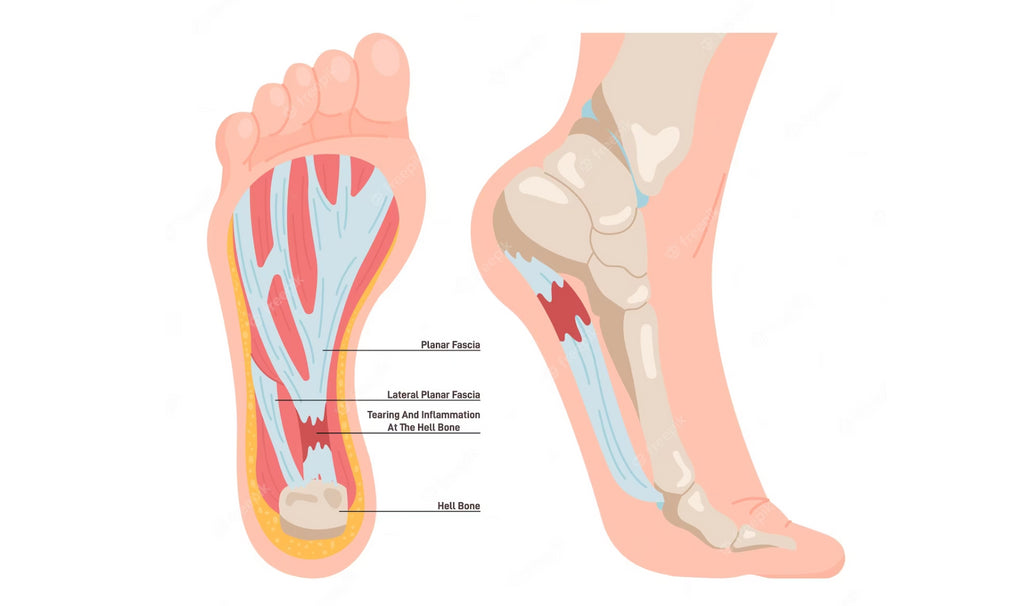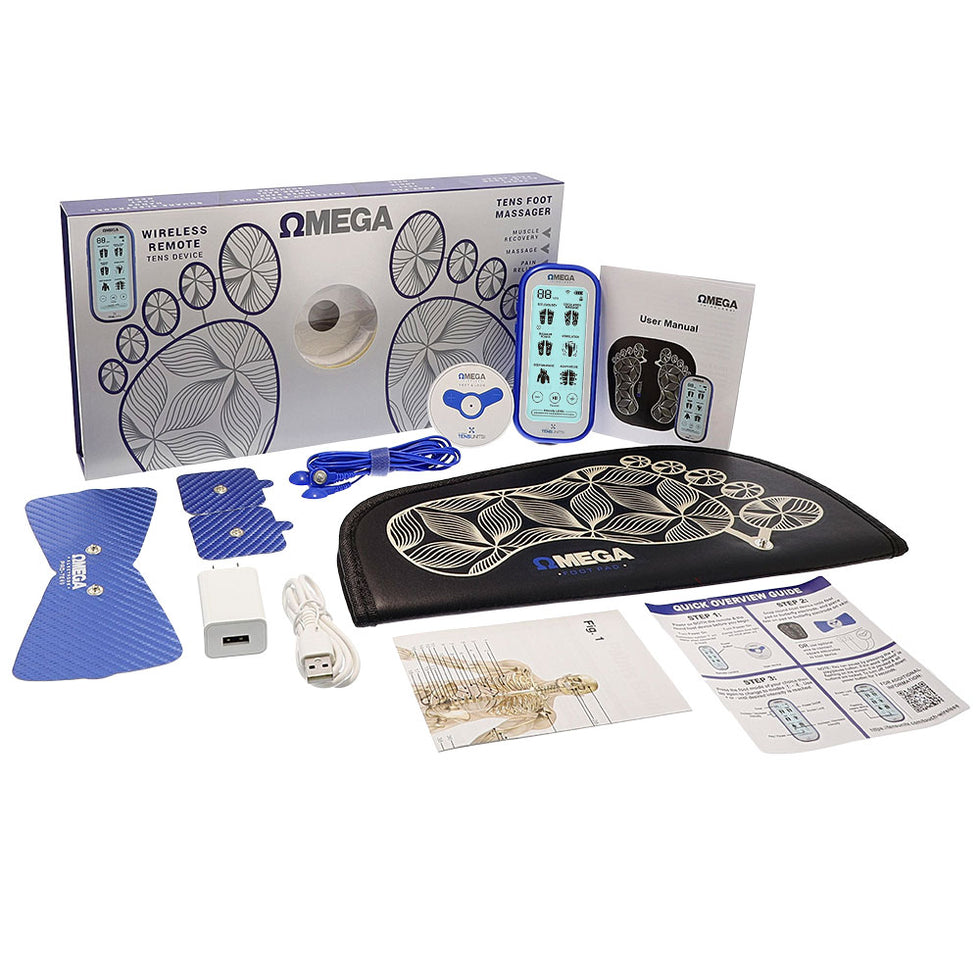Plantar Fasciitis Relief: How TENS Units Can Help

Posted by Shugert Marketing
If you have ever experienced sharp pain in the heel of your foot, you may be suffering from a condition called plantar fasciitis. Plantar fasciitis is a common foot ailment caused by inflammation of the plantar fascia, a thick band of tissue that runs across the bottom of your foot, connecting your heel bone to your toes. This affliction can be debilitating and significantly impact your daily activities. Fortunately, various treatments are available, one of which is TENS therapy. In this article, we will explore the use of TENS units for plantar fasciitis relief.
Understanding Plantar Fasciitis and Its Symptoms
Plantar fasciitis is a condition that affects millions of people worldwide. The plantar fascia is a thick band of tissue that runs across the bottom of your foot, connecting your heel bone to your feet. This tissue can become inflamed and irritated, causing pain and discomfort.
The most common symptom of plantar fasciitis is an ache in the heel of your foot that is usually sharp and can be felt first thing in the morning or after long periods of sitting or standing. The pain can also be felt after exercise, particularly in activities requiring you to be on your feet for long periods. Other symptoms include stiffness, tenderness in the foot, swelling, and redness.
Discover the benefits of TENS therapy for plantar fasciitis. Ready to get started?
TENS Unit for Plantar Fasciitis
Traditional Treatments for Plantar Fasciitis
Several traditional treatments for plantar fasciitis include rest, ice, stretching, and orthotics. Resting the affected foot and avoiding activities aggravating the condition are essential to healing the plantar fascia. In addition, applying ice to the area and stretching exercises can reduce inflammation and pain. Finally, wearing orthotics, such as shoe inserts or braces, can support the foot and reduce strain on the plantar fascia.
Doctors may recommend non-steroidal anti-inflammatory drugs (NSAIDs) or corticosteroid injections to reduce inflammation and pain in more severe cases. However, these treatments may have side effects and are unsuitable for everyone.
Introduction to TENS Therapy
Transcutaneous electrical nerve stimulation (TENS) therapy is a non-invasive treatment that uses electrical impulses to stimulate the nerves and reduce pain. It involves placing electrodes on the skin that deliver small electrical currents to the affected area.
TENS therapy has been used for many years to treat various conditions, including chronic pain, arthritis, and migraines. It works by stimulating the nerves in the affected area, which blocks the pain signals from reaching the brain. The electrical impulses also trigger the release of endorphins, the natural painkillers the body produces. TENS therapy is a safe and effective treatment option for many people, and it can be used in combination with other treatments for plantar fasciitis.
How TENS Units Can Help with Plantar Fasciitis
If you’re one of those suffering from plantar fasciitis, TENS units can provide you relief. So, understanding how a TENS unit works to alleviate plantar fasciitis symptoms can shed light on its therapeutic benefits.
When you use a TENS unit for plantar fasciitis, the electrical impulses generated by it — transmitted through electrodes placed strategically on the skin near the site of pain — are vital in reducing pain and inflammation in the affected area. These impulses serve several purposes in the treatment of plantar fasciitis. Firstly, they stimulate the sensory nerves in the foot. By activating these nerves, the TENS unit essentially “overloads” your nervous system, interfering with transmitting pain signals to the brain. As a result, the brain receives fewer pain signals, reducing pain perception. It’s like “bridging” the pain to a receptor other than your brain.
In addition to interrupting pain signals, TENS therapy stimulates the release of endorphins which, as mentioned before, are natural pain-relieving substances produced by the body. The endorphins not only act as natural painkillers but promote a sense of well-being and relaxation. This dual effect of blocking pain signals and triggering endorphin release contributes to the overall reduction in pain and discomfort associated with plantar fasciitis.
Another mechanism through which TENS therapy may provide relief is by increasing blood circulation in the affected area. The electrical stimulation from the TENS unit causes the blood vessels to dilate, improving blood flow to the plantar fascia. This enhanced circulation can aid in delivering oxygen and nutrients to the tissues, promoting healing and reducing inflammation.
By harnessing the power of electrical stimulation, TENS units offer a non-invasive, drug-free approach to managing plantar fasciitis. The therapy’s triple effect — blocking pain signals, promoting endorphin release, and enhancing blood circulation — can provide much-needed relief, reduce inflammation, and aid healing.
However, it is crucial to consult with a healthcare professional before starting TENS therapy for plantar fasciitis, especially if you have any underlying medical conditions or are pregnant. They can guide the appropriate use of TENS units and ensure their suitability for your needs.
TENS Unit Placement for Plantar Fasciitis
Proper placement of the TENS unit electrodes is essential for effectively treating plantar fasciitis. The electrodes should be placed on the bottom of the foot, near the affected area. The placement of the electrodes may vary depending on the severity of the condition and your personal pain tolerance.
How to Use a TENS Unit for Plantar Fasciitis
Using a TENS unit for plantar fasciitis is a straightforward process. First, ensure the device is fully charged, and the electrodes are correctly placed on the skin. Next, turn on the device and adjust the settings. It is recommended to start with the lowest setting and gradually increase the intensity until a comfortable level is reached. The therapy should be used for 20-30 minutes several times daily for best results. Remember to follow the manufacturer’s instructions when using a TENS unit for plantar fasciitis.
Recommended TENS Units for Plantar Fasciitis Relief
Many TENS units are available on the market, and choosing the right one for your needs can be challenging. When selecting one, it is essential to consider factors such as the number of electrodes, the battery life, and the intensity levels. It is also vital to ensure that the device is easy to use and has clear instructions. For example, you can try our Omega Foot Stimulator, which, besides the usual electrodes, comes with an Omega TENS Foot Pad unit specifically designed to target foot pain.
Other Ways to Manage Plantar Fasciitis
Several other ways to manage plantar fasciitis exist. These include stretching exercises, wearing supportive shoes, and orthotics; all can be combined with TENS units. Maintaining a healthy weight is also essential, as excess weight can put additional strain on the plantar fascia.
If the condition persists, your healthcare professional may recommend other treatments, such as physical therapy or surgery. However, these treatments are usually reserved for severe cases and are unsuitable for everyone.
Conclusion
Plantar fasciitis can affect your daily activities. Fortunately, there are several treatments available, including TENS therapy. TENS units can relieve those suffering from plantar fasciitis by reducing pain and inflammation in the affected area. Proper placement of electrodes and following instructions is essential.
If you are experiencing symptoms of plantar fasciitis, it is essential to consult with a healthcare professional to determine the best course of treatment for your needs. Incorporating TENS therapy and other treatments can help you manage the condition and improve your quality of life.
Ready to experience relief from plantar fasciitis? Try our Omega Foot Stimulator with Remote Control and say goodbye to foot pain today!
Get the Omega Foot StimulatorSHARE:



